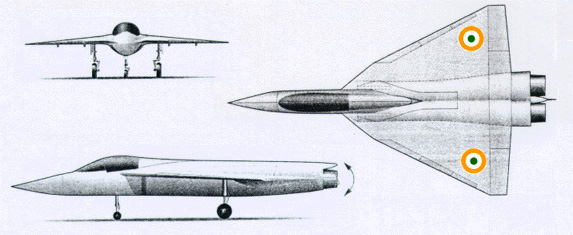
| Home |
| SPACE | TRANSPORT: | Aircraft : | Medium Combat Aircraft |
Last Updated : June 24, 2002
The twin-engined Medium Combat Aircraft (MCA) is a stealthy Gen-5 combat aicraft optimised for strike missions. It will complement LCA and Su-30MKI as India's leading combat planes. If given the go-ahead, it should fly before 2010 and be inducted by 2015. Right now it is only a concept.

India is currently developing LCA a light multirole attack plane. The only components common between MCA and LCA will be part of the wing, the Kaveri engine, and some systems and subsystems. MCA will be much heavier (12 ton dry weight).
The LCA has started flying in 2001 and should be inducted around 2008. MCA itself should make its first flight before 2010. It will face direct competition from China's J-12 , which should come out before 2015.
[Why India needs it] [Propulsion] [Stealth] [Latest Developments]
MCA is basically envisioned as a replacement for the British Jaguar and Mirage 2000 the IAF flies, which will be phased out by 2015.
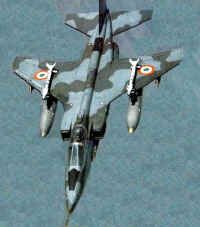

The State owned Gas Turbine Research Establishment [GTRE] was to indigenously develop the Kaveri engine to power the LCA and MCA. But there have been major slippages in all the milestones. GE, SNECMA, and Klimov had all offered to provide the engines for this aircraft.
The Kaveri engines in the MCA will have a slightly higher dry thrust than in the LCA engine. These engines will also have thrust-vectoring nozzles. It is unknown which company will be providing this technology, or whether it will be developed in India itself. A supercruise capability is not being sought. The twin engined aircraft is planned to have a thrust ratio of 7:8:1. The MCA will use India's own radar-absorbent material to reduce radar cross-section.
| Kaveri | |
|---|---|
| Air-mass flow | 78 kg/s |
| By-pass ratio | 0.16 |
| Overall pressure ratio | 21.5 |
| Turbine entry temperature | 1487-1700 K |
| Maximum dry thrust | 52 kN (5302 kg) |
| Maximum dry SFC | 0.78 kg/hr/kg |
| After burner maximum power thrust | 81 kN (8260 kg) |
| After burner maximum power SFC | 2.03 kg/hr/kg |
| Thrust-to-weight ratio | 7.8 |
Kaveri engine is a two-spool bypass turbofan engine having three stages of transonic low pressure compressor driven by a single-stage low pressure turbine. The core engine consists of six-stage transonic compressor driven by single-stage cooled high pressure turbine. The engine is provided with a compact annular combustor with airblast atomisers. The aerothermodynamic and mechanical designs of engine components have been evolved using many in-house and commercially developed software for solid and fluid mechanics.
Kaveri three-stage transonic fan, designed for good stall margin and bird strike capability, handles an air mass flow of 78 kg/s and develops a pressure Combustion Chamber Liner ratio of 3.4. The six-stage variable capacity transonic compressor of Kaveri develops a pressure ratio of 6.4. The variable schedule of inlet guide vanes and two rows of stator is through FADEC control system to open the stator blades in a predetermined manner. High intensity low UD ratio annular combustor of Kaveri engine incorporates air blast injection of fuel for uniform outlet temperature profile and reduced carbon emission.
Kaveri high pressure turbine is provided with an efficient cooling design incorporating augmented convection-cum-film cooling for the vanes and combination cooling for the rotor blade to handle up to 1700 K turbine entry temperature. Kabini engine comprising high pressure compressor, combustor and high pressure turbine has undergone high altitude test at facilities abroad successfully demonstrating the flat rating concept of Kaveri engine assembly and in particular the combustor high altitude ignition and stability performances.
Kaveri engine has been specifically designed for Indian environment. The engine is a variable cycle-flat-rated engine in which the thrust drop due to high ambient, forward speed is well compensated by the increased turbine entry temperature at the spool Kabini altitude test speed. This concept has been already demonstrated with high temperature and pressure condition in DRDO's High Mach Facility. Kaveri engine is controlled by Kaveri full authority digital control unit {KADECU), which has been developed and successfully demonstrated at DRDO's test bed.
Stealthiness will be a priority and hence the MCA will have two small, outward-canted fins and the external fuel tanks will be mounted above the wings. Absence of a vertical fin improves stealth. However, not all weapons will be internal and hence will compromize the stealth.
If all progresses according to plan, MCA will become first military fighter that has no tail - at all. USA is the only country to have seriously pursued such aircraft. It experimented with tail-less design in X-36. F-16X concept is another tail-less concept.
 |
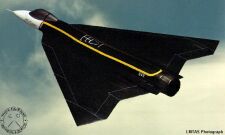
|
Tail-less design has been seen in Flying Wings, but these represent a separate class of aeroplanes. To realize the MCA, India will have to develop cutting edge technology. US help in this area is obviously expected.
In June 2001, India was offered 'joint development and production' of a new 5th generation fighter by Russia. Russia has been trying to sell this concept both to China and India for some time, but this time it was made directly to India's Defense Minister. The new fighter will 'counter' America's second 5th gen Joint Strike Fighter [JSF] which too is undergoing flight testing.
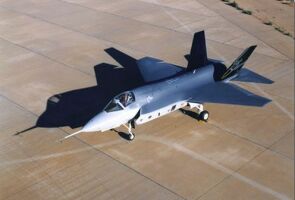
The plane we are talking about is Russia's Perspektivnyi Aviatsionnyi Kompleks Frontovoi Aviatsyi (PAK FA), which means 'Future Air Complex for Tactical Air Forces' : (Russian Name=Wierd Name). It is intended to be the same size as the US JSF but have a mission profile closer to the F-22 Raptor, with air superiority being the primary mission and ground attack and reconnaissance being secondary. Also similar to the JSF, the cost is expected to be about $30 million each. Even the deadlines assumed by the Russians are directly related to the date of entering JSF into the market.
Frozen out of most of the world's civil aircraft market, Russia retains an unquestioned presence only in fighters and helicopters, which means that developing a new generation of fighters is critical to the survival of the Russian aerospace industry, Russian officials say.
"The creation of the new-generation fighter is a matter of life or death for the Russian aircraft industry," said Evgniy Fedosov, chief of the State Scientific-Research Institute of Aviation Systems, called GosNIIAS.
The first deliveries, both for Russian armed forces and for export, would be possible in 2011-12. The trick, however, will be finding the money to develop the fighter. The first source of funds, small and uncertain, is the Russia's Ministry of Defence budget. The second source, several times larger, is the export revenues of the companies participating in the programme. The third possible source is financing from other countries interested in buying the aircraft.
Several proposals exist for the PAK FA. Sukhoi, for example, modified it S-54 trainer project to come up with its S-55 LFI concept. Mikoyan & Gurevich [MiG] has showcased - the I-2000 - Interceptor-2000 (Istribityel-2000)
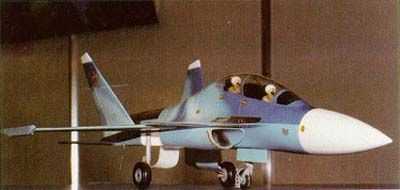 |
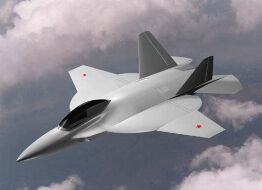 |
In November 2001, Russia's Deputy Prime Minister, Ilya Klebanov's announced that India and Russia had agreed to jointly develop a fifth-generation strike aircraft. This was the result of a four-day visit to Russia by India's Prime Minister. It was quoted by the RIA Novosti news agency as saying that the two sides were preparing a presentation of the new project in India in the first quarter of 2002. It would be the most ambitious and sophisticated defence project undertaken by the two countries so far. It seems that the agreement is currently only 'in principle' - not signed on the dotted line.
At the time of writing this piece, the PAK FA was yet to be named, which would be done only after Sukhoi presents their design to the Russian government. This process should be complete in 2003 only. It is a common misconception that Sukhoi's S-37 Berkut (Golden Eagle) is Russia's next fighter - it may or may not be, but should heavily influence it's design.
Also See :
| Aircraft | : | LCA |
| Aircraft | : | J-12 |
| Aircraft | : | X-47 Pegasus |
| Spacecraft | : | AVATAR |
| Gallery | : | LCA |
| Gallery | : | Su-30MKI |
| vayu-sena.tripod.com/info-su30mki.html: A complete page on the Su-30MKI with history, features specs |
| drdo.org: Defence Research and Development Organisation |
| ada.gov.in: Aeronautical Development Authority |
| cmmacs.ernet.in/nal/: National Aerospace Authority |
| hal-india.com: Hindustan Aeronautics Limited |
| jast.mil: JSF's official site. |
| members.nbci.com/082499/aviation/nws001/s5455biblio.htm: Venik's LFI/LFS page. |

Comments or Questions? Mail ST at : [email protected]
| [ Home ] | [ Aircraft ] | [ Explore Space ] | [ Space Stations] | [ Spacecraft Tech ] | [ Spacecraft ] | [ X-Prize ] |
| © Space Transport | Top |